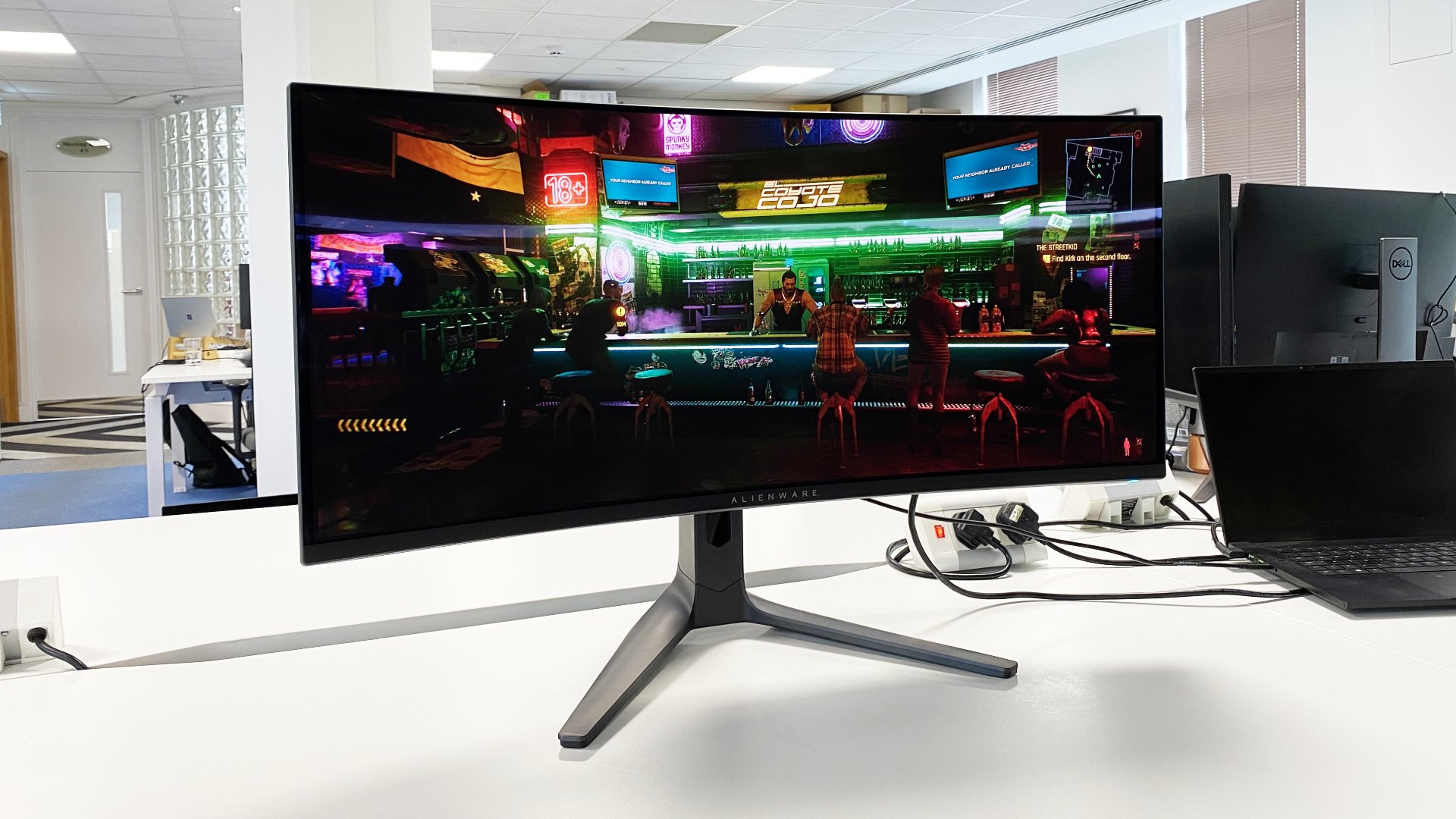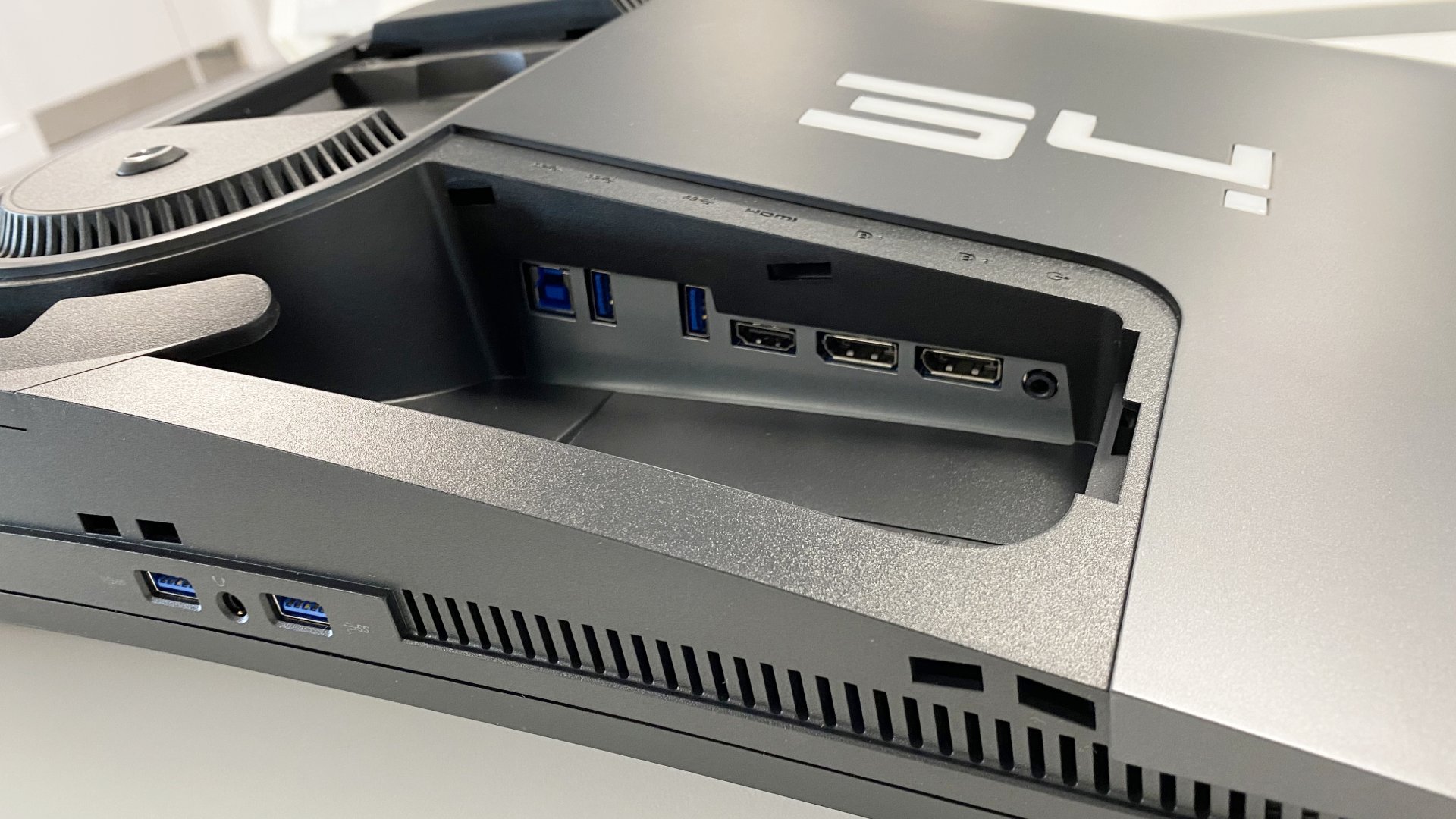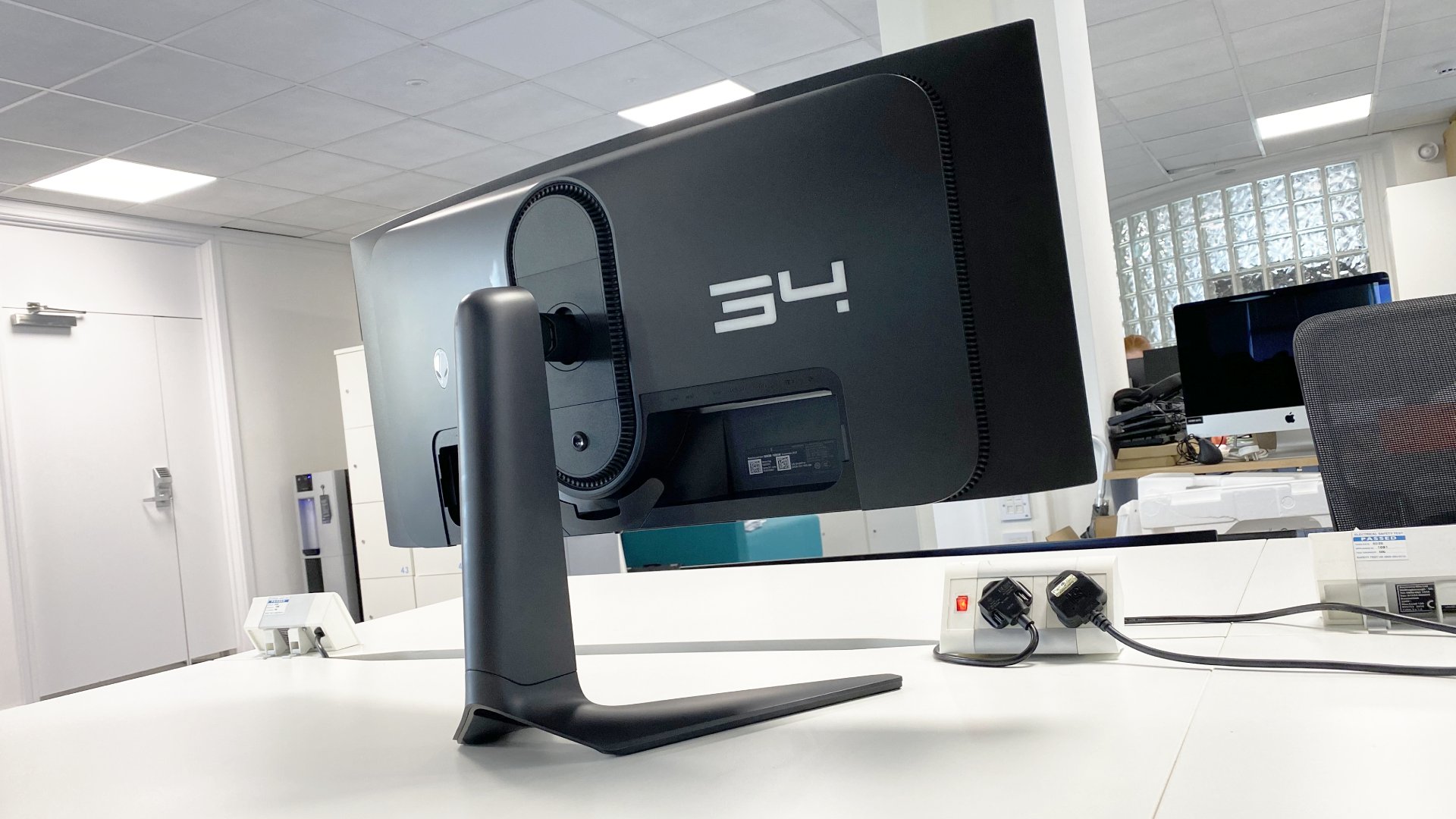Our Verdict
It may seem like a minor tweak, but the addition of a glossy anti-glare coating makes all the difference. It really lets the OLED panel rip. That this revised "F" model is also cheaper than the OG Alienware OLED and the similarly glossy Philips competition seals the deal. This is our new favourite among the OLED monitor massive.
For
- Glossy coating makes all the difference
- Ultra-quick response
- Good full-screen brightness
Against
- Still fairly pricey
- Mediocre pixel density
PC Gamer's got your back
It's a simple, low-tech tweak. But it makes all the difference. Alienware has a second 34-inch ultrawide OLED gaming monitor out in the Alienware 34 AW3423DWF and, hallelujah, it has a glossy anti-glare coating in place of the OG model's matte coating. Hold that thought, we'll come back to the glossy goodness in a moment.
Hallelujah, it has a glossy anti-glare coating.
When Alienware wheeled out what was the world's first OLED gaming monitor, the Alienware 34 AW3423DW, it went straight to the top of the table. It was simply stunning.
But it wasn't, you know, actually perfect. Now there's another 34-inch ultrawide Alienware OLED monitor that looks nearly identical but costs several hundred dollars less. So what, exactly, is going on?
The new Alienware 34 AW3423DWF adds an "F" on the end and loses a few on-paper features in the quest for that lower price point. For starters, the mostly pointless Nvidia G-Sync Ultimate certification and the costly G-Sync chip it requires have been ditched.

Screen size: 34-inch
Resolution: 3440 x 1440
Brightness: 1,000 nits peak HDR 3% APL, 250 nits full screen SDR
Response time: 0.1ms
Refresh rate: 165Hz
Viewing angle: 178° H&V
Contrast ratio: 1M:1
Features: OLED panel, 99.3% DCI-P3, adaptive sync, 2x DisplayPort 1.4, 1x HDMI 2.1, USB hub, 1800R curve
Price: $1,099 | £929
In its place you get AMD's Freesync Premium Pro and therefore perfectly adequate adaptive refresh support. Speaking of refresh rates, this new F model steps down from 175Hz to 165Hz. You're never going to feel that difference in-game and it seems like the sort of minor spec tweak designed for product differentiation. You know, to help Alienware justify the price of the more expensive model: it's 10Hz faster!
Whatever, those details aside you're mostly getting the same 34-inch ultrawide and slightly curved proposition as before. The Samsung QD-OLED panel is carried over, which is a very good thing.
Not only do you get the silly-fast pixel response that's characteristic of modern OLED tech. Samsung's take on OLED delivers much more consistent brightness performance than LG's competing OLED panels, as seen in LG's own OLED gaming monitors and models like the Corsair Xeneon Flex.
So, you don't have to deal with distractions like the whole screen dimming dramatically in response to rendering a large bright object, when, say, you open your web browser over a darkk desktop wallpaper and the OLED brightness limiter kicks in. Yuck.

This is simply the best HDR gaming experience you can currently get.
This Alienware does have a brightness limiter, but it's far less aggressive than on most LG-equipped monitors and you barely notice it happening. More to the point, this monitor always looks punchy, which you absolutely cannot say of monitors with LG OLED tech.
In fact, it's better than that because the glossy really lets the OLED panel sing. In that regard, it's just like the Philips Evnia 34M2C8600, which is another member of the Samsung QD-OLED gang and also has a glossy anti-glare coating. It does wonders for black levels and contrast. Along with the Philips, this is simply the best HDR gaming experience you can currently get.
Incidentally, the coating is very well judged. It's not over reflective and distracting in that regard. It just ups the contrast and removes that slight greying of darker tones that comes with a matte coating.





Anyway, there are LCD monitors with mini-LED backlights that will go brighter, especially full-screen or near-full-screen. But they lack the per-pixel lighting precision of OLED. Oh, and the speed. Lordy, this thing is quick, there's just no motion blur, not from the pixels.
Of course, at 165Hz there are faster displays in refresh terms. But for most gamers most of the time, 165Hz is plenty. Anyway, aside from the changes and tweaks discussed, most of what applied to the original Alienware 4 AW3423DW also applies here. It's just this monitor is cheaper, which makes it an easy pick.
✅ You want the best gaming monitor on the market: With the combination of Samsung's punchy OLED panel, great HDR performance, glossy finish, a broad ultrawide resolution, and lightning pixel response, this is as good as it gets right now.
❌ You crave 4K: The ultrawide res is as good as it gets in proper PC monitor sizes, with 4K OLEDs only starting at TV panel sizes. Actual 4K 27- or 32-inch 4K OLED screens are likely to arrive within a year.
It's also cheaper than the Philips Evnia and compared to that monitor is only missing a USB Type-C connection, which in a gaming context isn't a huge loss. Current USB Type-C power delivery is limited to 100W, which isn't enough to keep a gaming laptop juiced.
As for reservations, well, once again it's the same story as the OG Alienware OLED. For general computing the pixel density ain't great. That doesn't make for terribly crisp fonts in Windows or super sharp image detail. The triangular rather than vertically striped RGB subpixel substructure doesn't help with text clarity, either.
Then there's the whole OLED burn-in thing. There's some early evidence that Samsung's QD-OLED tech may be slightly more susceptible to image retention than the LG alternative. But it's not definitive. Whatever, you get a three-year warranty with burn-in cover, so the simple answer is don't buy if you can't accept any burn-in after that time period, because you won't be covered.
And of course, this is still a very expensive monitor, even at the relative discount. But you can still ink the new Alienware 34 AW3423DWF in as our new favourite gaming panel. Because it's absolutely farking fabulous.
It may seem like a minor tweak, but the addition of a glossy anti-glare coating makes all the difference. It really lets the OLED panel rip. That this revised "F" model is also cheaper than the OG Alienware OLED and the similarly glossy Philips competition seals the deal. This is our new favourite among the OLED monitor massive.

Jeremy has been writing about technology and PCs since the 90nm Netburst era (Google it!) and enjoys nothing more than a serious dissertation on the finer points of monitor input lag and overshoot followed by a forensic examination of advanced lithography. Or maybe he just likes machines that go “ping!” He also has a thing for tennis and cars.


